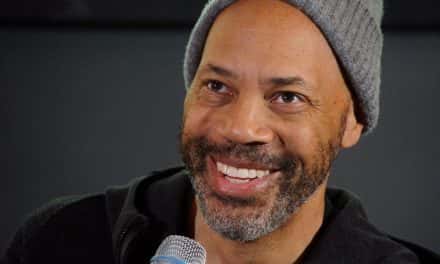
“[A] hard truth is that even when the economy picks up and employers are on a hiring binge, black people have a harder time getting jobs and are paid less than similarly situated white workers. That is exactly what happened from 1996 to 2000, the last genuinely hot job market, and it points clearly to racial discrimination, not just in hiring, but in a range of public policies that disproportionately affect black people. These include the dearth and high cost of child care, which harms single mothers the most; poor public transportation in many rural and suburban areas, which makes keeping a job difficult; and mass incarceration of black men and the barriers to employment that go with it.” – New York Times
As many around Milwaukee spend time eating large meals and enjoying time with friends and family, I recognized that the day after Thanksgiving brought many people in the city back to the reality that they want and need better jobs.
The federal government created the minimum wage in 1938. The federal minimum wage in the United States is currently $7.25 per hour. It has been at that same level since July 24, 2009. If you work a full-time job at minimum wage you will earn $15,080 in a year. Twenty-nine states have a minimum wage higher than the federal government; Wisconsin is not one of them. Some municipalities around the country have the power to create their own minimum wages and have increased them significantly; Milwaukee is not one of these municipalities.
The federal minimum wage was worth nearly 15 percent less in 2018 inflation adjusted dollars than it was in 2009 when it was increased from $6.55 per hour. It reached its peak value in 1968. The minimum wage in 1968 is the equivalent of $10.15 per hour in 2018 dollars. The Economic Policy Institute estimated in a February 2019 report that raising the federal minimum wage to $15 per hour by 2024 would directly lift the wages of 28.1 million workers and indirectly lift wages for 39.7 million workers, 26.6 percent of the wage-earning workforce.
Many complain that raising the minimum wage would increase wages for people who do low-skill work like working at fast food restaurants and that somehow they do not deserve this type of pay. The less people make, the less they can spend which negatively impacts the national economy.
The ousted CEO of McDonald’s, Stephen Easterbrook, is receiving a golden parachute when he leaves the company in the near future. According to National Public Radio, “Easterbrook’s exit package totals $41.8 million, which includes six months of severance pay, shares he can cash out in the future and other equity. And that amount is in addition to $23.8 million in stock options that Easterbrook can exercise now.” That exit package is enough to buy 10,476,191 Big Macs or enough to pay 2,772 minimum wage workers for a year’s worth of work. Adding the stock options would buy an additional 5,964,912 more Big Macs and pay another 1,578 minimum wage workers for a full year. In 2018, Easterbrook made $15.9 million or $849 for every dollar made by the average McDonald’s worker in the United States who made $9 per hour. $9 per hour is the going rate for most fast food restaurant team members across the nation.
Milwaukee was once known as the “Machine Shop of the World” which resulted in over 100,000 manufacturing jobs in the city. When Milwaukee reached its peak population in the early 1960s there were about 120,000 such jobs in the city. Most of the jobs were union jobs and paid really well, provided a pension and free health insurance. Those family supporting jobs at A.O. Smith, Pabst, American Motors, Allis Chalmers, and many others made Milwaukee a very attractive city to live in.
As WWII ramped up the need for workers, blacks moved to Milwaukee in large numbers to take those jobs. The black population of the city increased from 8,821 in 1940 to over 21,000 by 1950, more than 62,000 in 1960 and over 105,000 in 1970. Not only was the black population growing rapidly, but also the standard of living for blacks in Milwaukee was much better than in most other cities in the country. Nearly half (43%) of blacks worked in industrial jobs in the city in 1970. This was the highest percentage of any city in the nation.
In the Midwest, the black median wage was about 95% of the white median as a result of unions and high paying manufacturing jobs in cities like Chicago, Cleveland, Detroit, and Milwaukee. Today it has dropped to only 76% of the white median in the region. This drop is the steepest of any region in the country.
The black median family income in Milwaukee in 1970 was the seventh highest in the nation. That 1970 median family income would be the equivalent of over $49,000 today. Unfortunately, those jobs would start to disappear for Milwaukeeans. 118,600 manufacturing jobs existed in the city in 1967 when the civil unrest in August of that year occurred. Ten years later there were 91,400 manufacturing jobs left.
The recessions of 1980 and 1981-82 hit Milwaukee hard. By 1982 only 77,900 manufacturing jobs were still available in Milwaukee. Five years later the city had lost an additional 14,000 manufacturing jobs. By 1997 Milwaukee had lost 44,933 manufacturing jobs in twenty years. By 2017 there were only 27,126 manufacturing jobs left, according to the U.S. Census Bureau data.
A total of 105,925 manufacturing jobs have disappeared from Milwaukee since 1947 when blacks first began to show up in large numbers looking for work in our factories, foundries, tanneries, breweries, and other industrial facilities. The black median family income in Milwaukee today is only $27,669 per year versus $41,361 nationwide. Whites in the city have a median family income of nearly double the black rate at $53,043 per year.
Some places in the city people are doing much worse. As is often the case, those in the 53206 zip code where I grew up are suffering more than in most other parts of the city. According to a report by Mark Levine from the UW-Milwaukee Center for Economic Development earlier this year, a 25 year-old male in Waukesha County that dropped out of high school makes just under $2,000 less than a 25 year-old male in the 53206 zip code with a bachelor’s degree.
We hear constant pleas for job creation by citizens in the city because people cannot make their way to where the growth of jobs are outside the city. According to Census Bureau data, Milwaukee had 296,721 jobs in 2017. There were 301,794 in the city in 2002, 5,073 more jobs than in 2017. Overall Milwaukee County has nearly the same number of jobs it had in 2002, 505,543 in 2017 versus 505,711 in 2002.
Our outlying counties have all seen job growth over this same timespan. Waukesha County grew from 225,634 jobs in 2002 to 252,342 in 2017 an increase of 26,708 jobs. Ozaukee County added over 6,000 jobs going from 37,487 to 43,620. Washington County grew from 48,356 jobs to 55,214 in 2017, adding 6,858 jobs over 2002.
More importantly are the types of jobs available. Low wage jobs paying $1,250 per month or less (under $15,000 per year) have decreased significantly in Milwaukee and our suburbs as well. In 2002 there were 87,792 of those jobs in Milwaukee and they were 29.1% of all jobs in the city. By 2017 only 73,851 of those jobs were still around in the city and they accounted for only 24.9% of jobs in Milwaukee. In a way, that is a good sign because those low wage jobs keep people in poverty. But it also signals a disturbing trend for low wage earners in Milwaukee.
Jobs paying $1251- $3333 per month ($15,001-$39,996 per year) decreased in Milwaukee as well. In 2002 there were 122,888 of those jobs. That figure dropped to just 89,223 by 2017, a decrease of over 33,000 jobs. These middle tier jobs were 40.7% of jobs in Milwaukee in 2002 but only make up 30.1% of city jobs by 2017.
Higher earning jobs paying more than $3,333 per month (above $39,996 per year) have seen tremendous growth in Milwaukee since 2002. That year, these type of jobs were just 30.2% of the employment opportunities in the city, but by 2017 they had grown to account for 45% of the jobs in Milwaukee. Growing from 91,114 in 2002 to 133,647 by 2017 shows that the shift in jobs in Milwaukee has not been even. These higher earning jobs typically are the type of work that requires higher education, which makes it more difficult for those without it to gain access to these jobs.
The spatial mismatch between who works in the city and who works outside the city is stark. Non-Hispanic whites are currently just 35.8% of the residents of Milwaukee, but they have 72.1% of the jobs in the city. Blacks are 39% of the population but only have 21.3% of the jobs and Hispanics are 18.4% of city residents but have just 9.6% of jobs in Milwaukee.
Each Monday through Friday, 65,900 whites that live in Milwaukee’s suburbs and exurban counties commute to Milwaukee to work and then go back to their suburban homes at the end of the day. 32,565 blacks and 8,857 Hispanics leave the city to go to the burbs to work each day.
A recent article by Mike Gousha talked about the impact of the 2013 residency rule change and its impact on the city. Prior to this state law change, city employees – including firefighters and police officers – had to live within the city of Milwaukee to have those jobs. The change allowing them to live within 15 miles of the city has led to somewhere close to 10,000 city workers leaving the city. Only 45% of firefighters and police officers for the city currently live in Milwaukee.
The lack of infrastructure to provide transportation to the jobs centers in our suburbs leaves many Milwaukee families struggling financially. Since 1963 the city has lost 92,158 manufacturing jobs, our suburbs within Milwaukee County have lost 30,953 of these jobs, and the three exurban counties have seen a net growth of 42,072 manufacturing jobs.
Wisconsin has the highest disparity in unemployment in the nation between blacks and whites according to the Center on Wisconsin Strategy (COWS). At year-end 2018 whites in the state celebrated an unemployment rate of only 2.8%, the lowest in decades. However the black unemployment rate was nearly triple that at 7.6%.
COW’s latest report on the racial disparity tells us the role that segregation has played in this crisis. Of the eight most segregated metropolitan areas in the nation six are in the Midwest.
“A half-century removed from the high-tide of the civil rights movement, progress on racial equity has slowed or stalled on many fronts. Nowhere is this more starkly evident than in the twelve states of the Midwest region, where racial disparities in economic opportunity and economic outcomes are wider than they are in other regions … We trace the origins of racial inequality in the Midwest to the deep imprint of racial segregation, which concentrated the regions’ African American population in relatively few urban counties—and then erected a forbidding architecture of residential segregation within those urban settings. In turn, the historical arc of economic opportunity saw African Americans flock to new opportunities in the industrializing Midwest in the middle years of the last century, and then be disproportionately hit by the deindustrialization that followed.”
For those celebrating with their families over the holiday season, it is a sad reality that far too many blacks in Milwaukee were not able to celebrate having a good job. Unemployment, and dismal job prospects, are the lived experience of many residents of the city. The physical, emotional, and psychological pain of the employment situation in our community has not been openly addressed in the political campaigns currently taking place.
As we continue to wait for someone to create family supporting jobs in the city, we will all continue to pay for decades of racism and intentional disinvestment that have left Milwaukee a shell of its former self, especially for its black and Hispanic residents.














